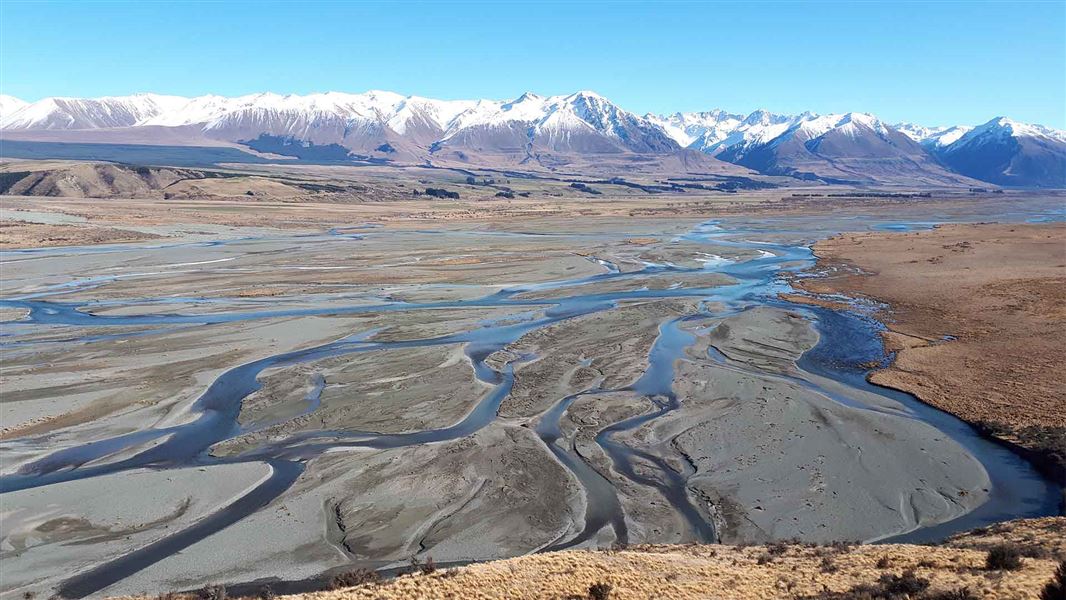Archived content: This media release was accurate on the date of publication.
Date: 05 August 2021 Source: The Office of the Minister of Conservation
“Canterbury’s braided rivers are an iconic part of the landscape and are home to a range of special birds and wildlife that have adapted to an ever-changing environment,” Kiri Allan said.
“We’ve seen with the recent floods how protection of these types of rivers – only found in a few other places globally – is critical to the survival of the area’s biodiversity.
“We are investing in two initiatives: an $8.7 million project focusing on the Lower Rangitata, led by Te Rūnanga o Arowhenua, and a $7.3 million project focusing on the Upper Rangitata, spearheaded by the Upper Rangitata Gorge Landcare Group.
Part of the Department of Conservation’s Ngā Awa river restoration programme, the Rangitata is one of fourteen rivers of significance.
“The Upper Rangitata project will see farmers and landowners partnering with DOC and other agencies to fence off stock, restore wetlands, trap pests, and propagate and plant eco-sourced and culturally significant natives in a joint move to improve water quality and enhance biodiversity values along the riverbank.
“It recognises the intrinsic values of this special area, which runs through some of the South Island’s best known high country stations including Mt Peel, Erewhon and Mesopotamia.
“The project on the Lower Rangitata, the section of the river from the Gorge to sea comprising a 65 km river run, focuses on the braided fairway, berms next to the main river channels, wetlands, and intensively farmed riparian margins within the lower catchment.
“Supporting and championing people to connect to their whenua, learn and apply new skills, while also leaving an enduring conservation legacy is the focus of our Jobs for Nature programme.
“The last few years have been challenging ones for Canterbury. This is a fantastic multi-pronged initiative that will have major benefits for the environment into the future,” Kiri Allan said.
Background information
This project is part of a cross-agency approach to the restoration and protection of the river. DOC, Land Information New Zealand, Environment Canterbury, Timaru District Council, Ashburton District Council and Te Rūnanga o Arowhenua having formed a steering group and are working together to support the restoration of the awa.
The Lower Rangitata project will be managed by Te Rūnanga o Arowhenua, while the Upper Rangitata project will be managed by the Upper Rangitata Gorge Landcare Group.
34 jobs will be created over the four years.
Ngā Awa – Rangitata
The river has great cultural and spiritual significance for Te Rūnanga o Arowhenua and Ngāi Tahu.
The Rangitata begins in the headwaters of the Clyde and Havelock Rivers, which are fed by springs, streams, wetlands and melting glacier ice in the Southern Alps. The channels of this braided river criss-cross a wide gravel bed on a 121 km journey to the sea. Braided rivers are internationally rare and the Rangitata supports many uncommon fish, plants, and birds.
A gorge at the river’s mid-point forms a natural division, with different land uses, ecology, and character above and below. The upper part of the catchment has low intensity farming and landscape-scale riverbed weed and predator control.
Below the gorge, the river is constrained by stop banks and water for irrigation is taken out. Here the farming is more intense, and weeds and encroaching land uses have created a much less natural landscape.
Contact
For media enquiries contact:
Email: media@doc.govt.nz
